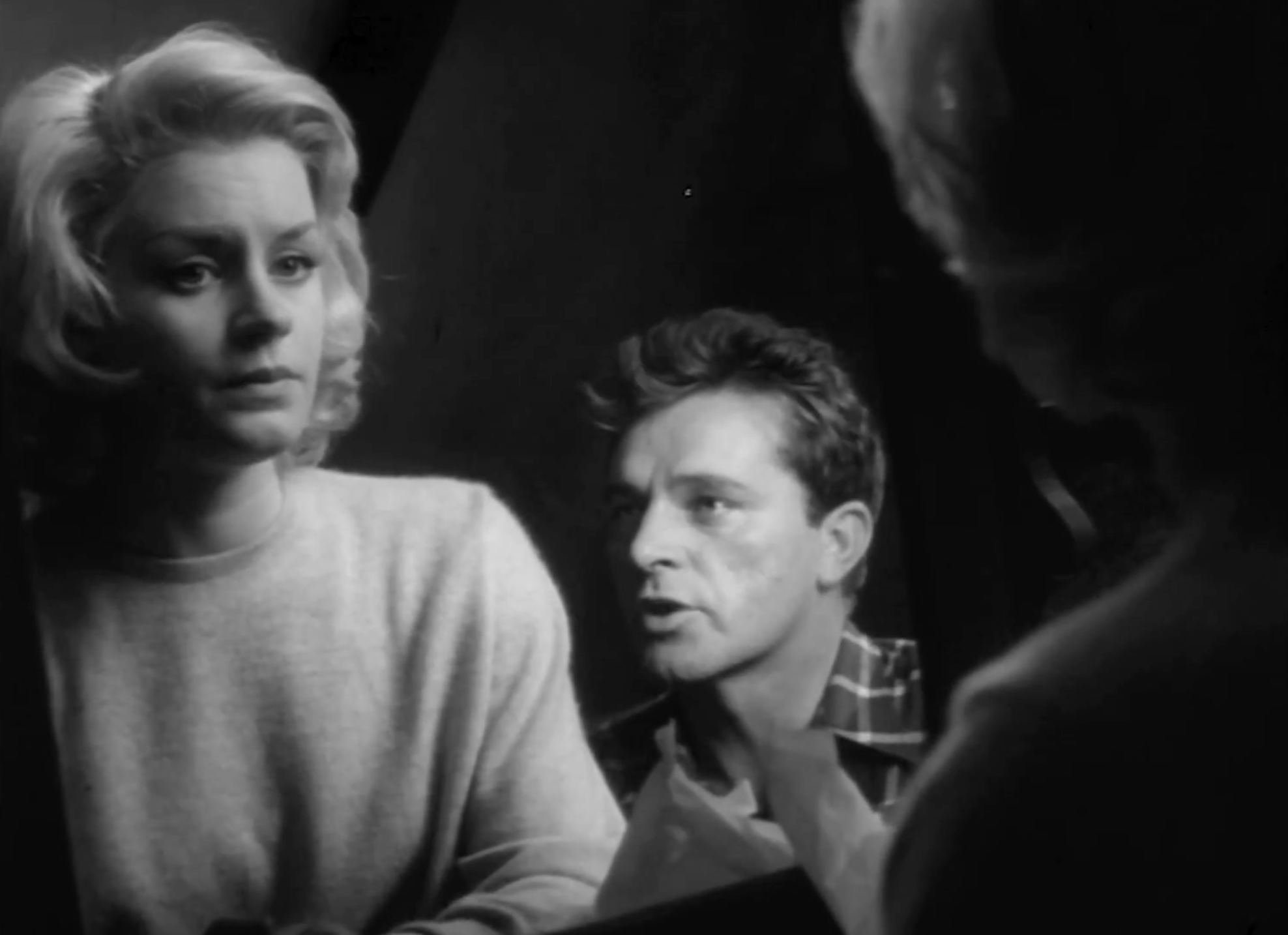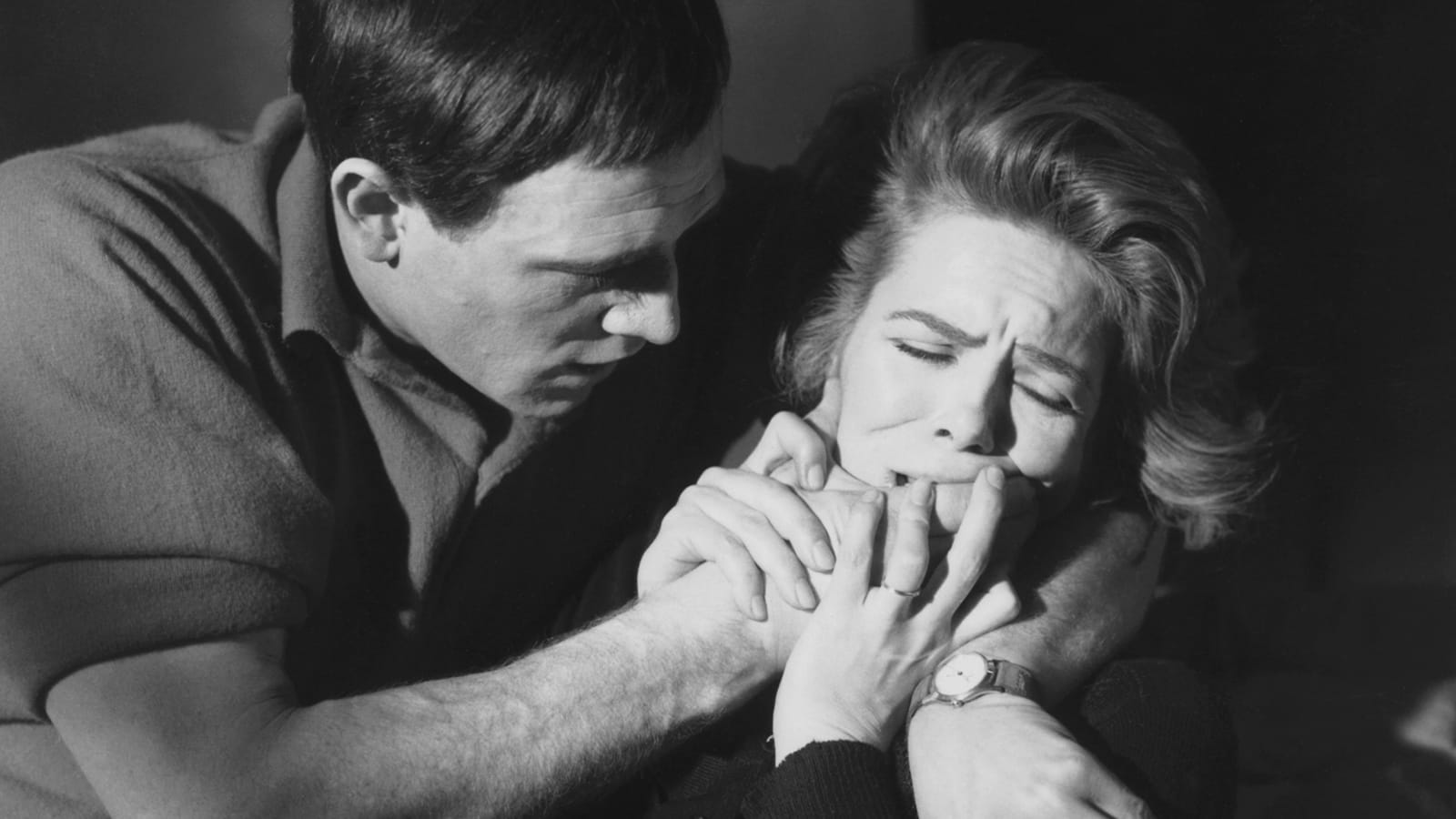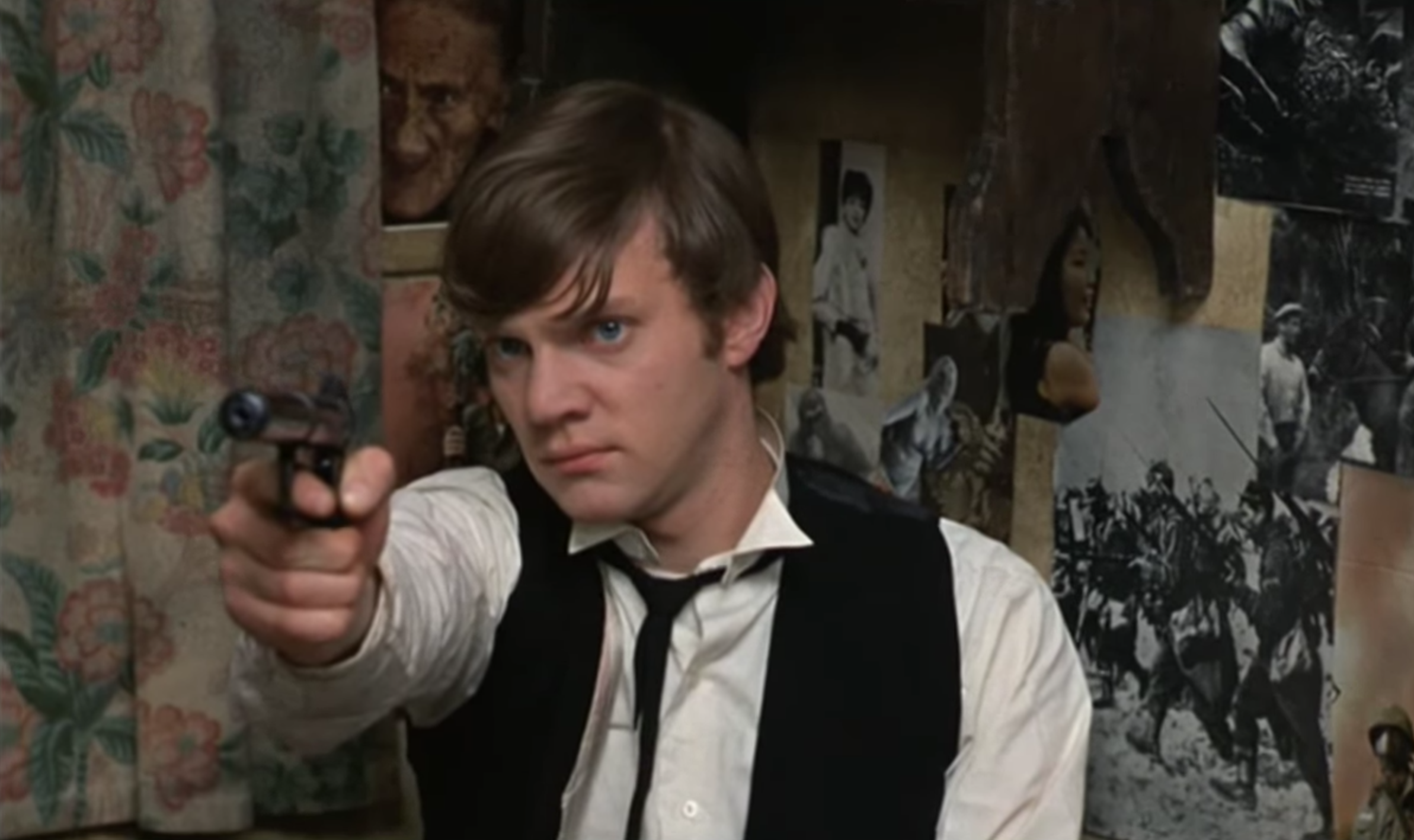British New Wave Films (1959 - 1969)
/darling (credit: Anglo-Amalgamated)
By the end of the 1950s, box office figures were falling in the U.K., and production companies were looking for a way to capture a renewed interest in domestic titles. Partly thanks to the considerable success of Hammer Films, horror was still the industry's most popular genre, but Britain was also about to embrace a movement that echoed the nouvelle vague. Emerging from a group of documentarians, known as the Free Cinema group, came 'Kitchen Sink Cinema', which sought to represent the working class on the big screen. Throughout the 1950s, the group of playwrights known as Angry Young Men had given theater a consciousness regarding the working class, and this would ultimately lead to the same development in cinemas. For this purpose, director Tony Richardson, who had been a key player in Free Cinema's documentary filmmaking, formed a production company, Woodfall, in 1959.
Room at the Top (1959) by director: Jack Clayton
An ambitious but morally questionable accountant wants to wed a factory owner's daughter in order to inherit their wealth. Despite this, he falls in love with an older woman who is already married.
Director Jack Clayton was given the opportunity to direct after impressing producer James Woolf with his short film, The Bespoke Overcoat. Room at the Top is based on John Braine's novel of the same name. It saw huge success at the box office, and earned French actress Simone Signoret an Academy Award. Surprisingly, Hermione Baddeley was nominated for an Oscar for Best Supporting Actress, despite only having 2 minutes and 32 seconds of screen time. The film's sequel, Life at the Top, was released in 1965.
Look Back in Anger (1959) by director Tony Richardson
A man must learn to accept his bitterness towards upper-middle class values when a love triangle forms between a married couple and their friend.
Starring screen legend Richard Burton, Look Back in Anger is based on John Osborne's eponymous play. It is remembered as a classic example of Kitchen Sink Cinema, as well as Woodfall's first production. Director Tony Richardson was seemingly under-qualified to helm a feature film at the time, but his direction of the stage play was enough to convince John Osbourne. He would even go as far as to call Richardson "the only possible commander to lead Woodfall's opening assault on the suburban vapidity of British film-making".
Osbourne would ultimately convince producer Harry Saltzman to allow Richardson to direct, even if it meant that they would initially lose funding from the film's financial backers. To his credit, it was also Harry Saltzman that convinced Richardson and Osbourne to form Woodfall Film Productions.
Look Back in Anger (Credit: Warner Bros.)
The Entertainer (1960) by director Tony Richardson
A failing performer, who has spent years working in British music halls, must create a plan in order to stay in the business.
Just like Look Back in Anger, The Entertainer is a John Osbourne play adapted for the screen by Tony Richardson, produced by Harry Saltzman. The film was shot on location in Lancashire, and starred celebrated actor, Laurence Olivier. In fact, Oliver had also played the lead in Osbourne's stage play, which was written at his own request.
Saturday Night and Sunday Morning (1960) by director Karel Reisz
A hard-drinking factory worker struggles to manage his rebellious exploits, including relationships with two women. To complicate matters even further, one of his lovers is married and pregnant with his child.
The film was produced by Tony Richardson, and is perhaps the quintessential example of Kitchen Sink realism on film. The film discusses sex and abortion like no film before it, and originally received an X rating (ages 16 and above) in theaters. However, it would later be given a PG (parental guidance) rating for home release.
The film has been a constant inspiration for British musicians, with lyrical references in songs by The Smiths, Franz Ferdinand, The Kinks and Arctic Monkeys.
Sanctuary (1961) by director Tony Richardson
A black maid living in Mississipi is tried for the murder of her white employer's child. However, more information regrading the infant's fate comes to light on the eve of the woman's execution. The film is based on two William Faulkner novels, Sanctuary and Requiem for a Nun.
A Taste of Honey (1961) by director Tony Richardson
When a teenage girl's alcoholic mother remarries, she is forced to fend for herself. In a cruel twist of fate, the girl becomes pregnant and consequently seeks support from a male friend. A Taste of Honey was based on the stageplay by Shelagh Delaney.
a taste of honey
A Kind of Loving (1962) by director John Schlesinger
When a Mancunian factory worker impregnates his colleague, he proposes marriage and moves into her family home. However, he had not anticipated how his disapproving mother-in-law, who now lives with them, would impact their daily life. Their marriage faces a tragedy, and the couple must consider the possibility of accepting 'a kind of loving'.
Based on Stan Barstow's novel, the story was also adapted into a TV drama in 1982.
The Loneliness of the Long Distance Runner (1962) by director Tony Richardson
A juvenile offender attending reform school makes an impression on its governor after showing off his abilities as a long distance runner. He is persuaded to compete in an upcoming competition and given privileges for his efforts, but the youthful runner must first evaluate his position within an elitist society.
Alan Sillitoe, who also wrote Saturday Night and Sunday Morning, adapted the screenplay from his own short story. The film notably borrows techniques seen in the French New Wave, including a particularly Truffaut-esque final sequence.
The L-Shaped Room (1962) by director Bryan Forbes
A young pregnant woman moves into a London boarding house, where she befriends the misfits also residing in her building. The film is an adaptation of Lynne Reid Banks's novel of the same name.
This Sporting Life (1963) by director Lindsay Anderson
Despite success on the field, An up and coming rugby star begins to contemplate the emptiness of his life. In an attempt to find meaning in his life, he tries to seduce his landlady.
Director Lindsay Anderson had previously been a film critic, known for accusations against the British Film Industry for neglecting the struggles of the working class.
This Sporting Life (Credit: Criterion)
In 1963, British cinema was about to make a sharp turn. While Kitchen Sink Cinema strived to tell the stories from poorer backgrounds, it would not tell the whole story of the British New Wave. The entirely unexpected international success of Tom Jones and the influence of its filmmaking traits meant that Kitchen Sink Cinema would take a back seat to comedic and provocative interpretations of sixties culture. While Kitchen Sink Cinema production would practically come to an end, the exploits of 'swinging London' would define the final years of Britain's New Wave.
Tom Jones (1963) by director Tony Richardson
Starring Albert Finney, the film is a contemporary adaptation of Henry Fielding's classic novel, The History of Tom Jones, a Foundling. Although the film is part of the British New Wave, it deviates entirely from Kitchen Sink realism seen in previous Richardson titles. The film was unexpectedly successful on a huge scale, even winning Best Picture at the Academy Awards, and would ultimately shift the movement's trends. The success of Tom Jones was in stark contrast to the financial failure of This Sporting Life, and these coinciding box office performances ultimately led Woodfall films to pursue stories that replicate the tone (and accompanying success) of Tom Jones from 1963 onwards. The fundamental difference would be the use of satire to mock authority, as opposed to realism.
Billy Liar (1963) by director John Schlesinger
An idle youth living in Northern England makes a series of irresponsible decisions while daydreaming about his own fantasies. His immaturity ultimately alienates those around him. The film is based on Keith Waterhouse's 1959 novel of the same name.
Billy Liar stars Tom Courtenay, who had been an understudy of Albert Finney's during the West End theatre adaptation of the novel, in which Finney had played the leading role.
Darling (1965) by director John Schlesinger
A beautiful young woman uses promiscuity to join the London's elitist fashion scene at the height of the Swinging Sixties. By this time, London had become the cultural center for the era's sexual liberation and artistic exploration.
Darling acts as a good example of how the nouvelle vague influenced the British New Wave's later years, particularly due to the film's edit. Throughout the film we see various jump cuts and freeze frames that had become synonymous with the French New Wave.
darling (credit: Anglo-Amalgamated)
The Knack... And How to Get It (1965) by director Richard Lester
A timid schoolteacher, observing Britain's sexual liberation from the sidelines, pines for greater knowledge of seduction. He asks his womanizing friend for advice, and soon has a chance encounter with a young woman who becomes convinced that she was raped while unconscious. Although this was not the case, an obscure series of events ensue after her presumption.
The film, which was based on Anne Jellicoe's play, won the Palme D'or at the 1965 Cannes Film Festival.
Alfie (1966) by director Lewis Gilbert
A frequent womanizer begins to experience the consequences of his actions. Based on Bill Naughton's play of the same name, Alfie can be considered to be a noteworthy gender reversal of Darling, whereby a man's sexual exploits end in tragedy for one of his lovers. The film also shares stylistic tendencies with Tom Jones, such as fourth wall breaks where the protagonist communicates directly with the audience.
Morgan - A Suitable Case for Treatment (1966) by director Karel Reisz
An upper-class woman divorces her husband, a failing artist who was raised by communists, and marries an art dealer. This leads the divorced artist, who seems to live in his own fantasies, to try a series of unusual acts that he could lead to their rekindling.
As the trend's popularity had died out since 1963, this is arguably the final example of Kitchen Sink cinema to come from the British New Wave. However, there are later examples of working class representation on screen. British screen icon Vanessa Redgrave played Leonie, the upper-class wife. She would appear in Antonioni's Blow-Up in the same year.
if... (1968) by director Lindsay Anderson
Director Lindsay Anderson, who was a key figure of the Free Cinema movement, delivers a satirical take on life within a British public school.
if... (Credit: Paramount Pictures)
Malcolm McDowell's performance in if... was the reason Stanley Kubrick wanted him for the part of Alexander DeLarge in 1971's A Clockwork Orange. In 1967, Lindsay Anderson had also directed Anthony Hopkins's acting debut in the short film, The White Bus.
Kes (1969) by director Ken Loach
Based on Barry Hines's A Kestrel for a Knave, the film centers on a boy's emotional connection with a kestrel. His newfound interest in falconry gives meaning to his troubled life.
By 1970, many central figures of the British New Wave had moved to Hollywood. John Schlesinger would direct Midnight Cowboy to great acclaim in 1969, while Jack Clayton had already ensured that he would not be typecast as a 'new wave director' with titles like The Innocents, an American horror flick. Tony Richardson would eventually leave for Hollywood, residing there from 1974 onwards, and many actors synonymous with the movement had become (or continued to be) international stars; namely Richard Harris, Albert Finney, Tom Courtenay and Michael Caine.
Although the movement was synonymous with smaller productions, American backers were beginning to have greater influence on British productions. A Hard Day's Night and the James Bond franchise had set a precedent from things to come, and the industry started to have a greater focus on genre films, and the politically driven.
Richardson left for Hollywood. Michael Caine, Albert Finney, Tom Courtenay, Richard Harris were international stars. While the British New Wave was, more often than not, synonymous with smaller productions, British cinema was beginning to gain more financial backing from American studios, which in turn influenced productions to focus more on genre pictures (often inspired by the nation's currently cultural phenomenon) than politically driven "assault on the suburban vapidity of British film-making" had come to an end.
Somewhat ironically, it would be Michelangelo Antonioni's Blow-Up, his first in the English language, that would be widely remembered as the quintessential swinging sixties film.
References
Wakefield, Thirza (15 July 2014). "10 great films set in the swinging 60s". British Film Institute.
Kim, Wook (22 February 2013). "17 Unusual Oscar Records: Shortest Performance to Win an Acting Award: 5 Minutes and 40 Seconds". Time. New York City: Time Warner.
Alexander Walker, Hollywood, England, Stein and Day, 1974 p51
Osborne, John (1991). Almost a Gentleman. London: Faber & Faber. p71
Richardson, Tony (1993). Long Distance Runner – A memoir. London: Faber & Faber.
Saturday Night and Sunday Morning BBFC page
Cinecollage.net: British New Wave







